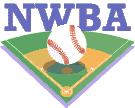| T O P I C R E V I E W |
| Rapid |
Posted - 10/01/2018 : 08:26:00
The term key performance indicators may sound like fancy strength and conditioning jargon, and truthfully, it can be immensely complicated for the “x’s and o’s” of exercise prescription. I thought this week I might shed some light on how we approach assessment and exercise prescription. Good training is simply about giving people what they don’t have, or improving qualities they could use more of.
So what’s a key performance indicator? It simply refers to a quality or skill that can be improved by training. It guides coaches and trainers in decision-making, and is the hallmark of a good assessment. Here are a few of the key performance indicators we think matter the most.
1. Health and Wellness
This is where many people fall short. The old saying “1 hour at the gym is the easy part, but what you do with the other 23 hours is difficult,” is important to remember. Is the athlete getting enough nutrients to grow and recover? Is he or she sleeping enough? Is their work, home, or school stress interfering with recovery or training output? These are important questions to keep in mind when giving somebody a workout.
2. Speed & Strength
Most people know how important these qualities are and certainly want to improve them. The important thing to remember is that in terms of athletic development, you’ve got to give the person what they NEED. What really makes training great is the approach. For example: Players A and B are training to improve force production capability (strength). Player A is a catcher. A naturally muscular, “bear” type individual where as player B is a springy, “kangaroo” type center fielder. The center fielder might need more reps to put on a few pounds, where as the catcher may need to focus on moving the weight more quickly. This is how we might prescribe different loads and rep schemes to each player. It’s how to get the most out of training, and creates balanced athleticism.
3. Movement Quality & Flexibility
This is another “hot topic” area that people know to be important, and indeed is an extremely important factor in good training. I like to watch people move before I even touch them in an assessment. Can they touch their toes? How do they handle themselves in a squat or lunge? What does the push up look like? Imagine this: a young man complains of arm pain after months of unsuccessful “band” work.” During the assessment he shows me 5 pushups that make me want to gouge my eyes out. There are other factors to consider obviously, but now I know this person has poor control over the rib cage, and now I have a good idea about where I want to go with the rest of the assessment and subsequent training.
If the rib cage is in a bad position, so is the scapula, which in turn puts the shoulder in compromised positions. This is why posture matters!
This is also why it’s important not to blindly and aggressively stretch. For example: if someone complains of chronic hamstrings tightness but can palm the floor on a toe touch, I can infer that it’s not a tissue rigidity issue. This person probably needs to learn how to control their pelvis.
Good training is about peeling back the layers of the basics and looking underneath the surface to give people what they need! We believe in asking questions, and doing our best to give everyone the right doses of what suits them!
We hope this is helpful! Have a great week, and as always feel free to comment with questions or topic requests!
All the best,
The Rapid Team
www.go-rapid.com
Andrew Gordon, MS, CSCS
Andrew.Gordon@go-rapid.com
|
|
|




